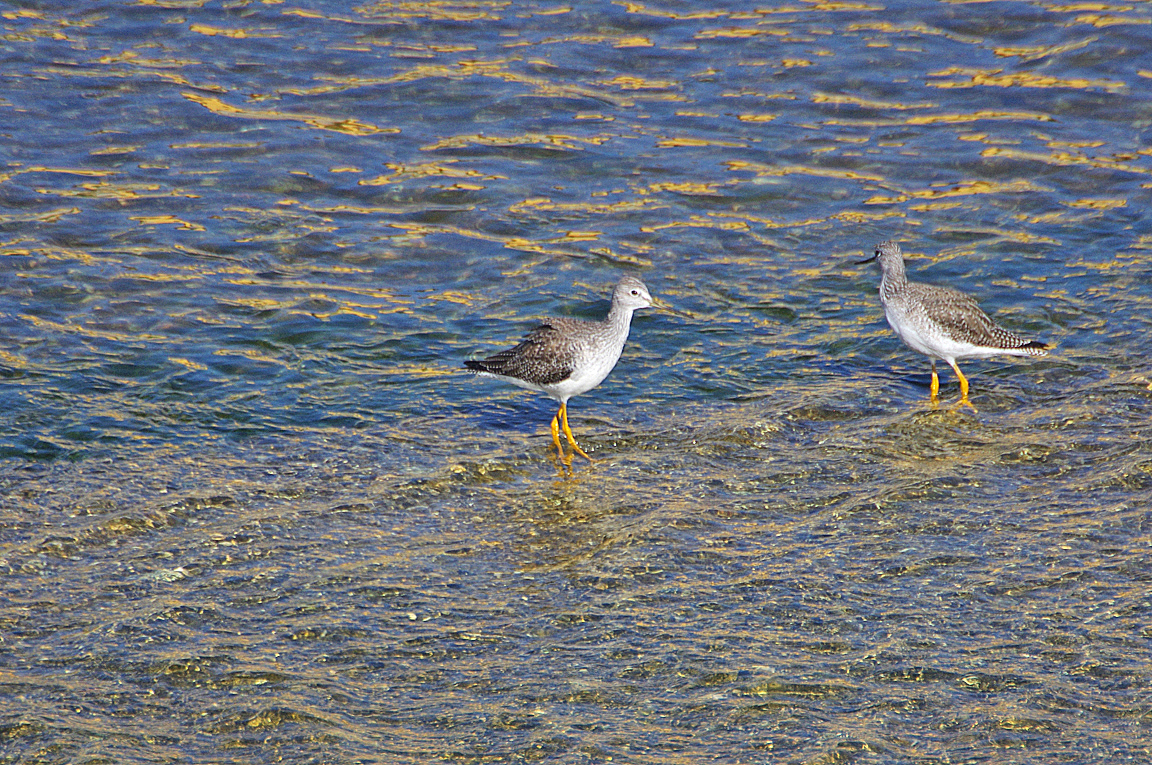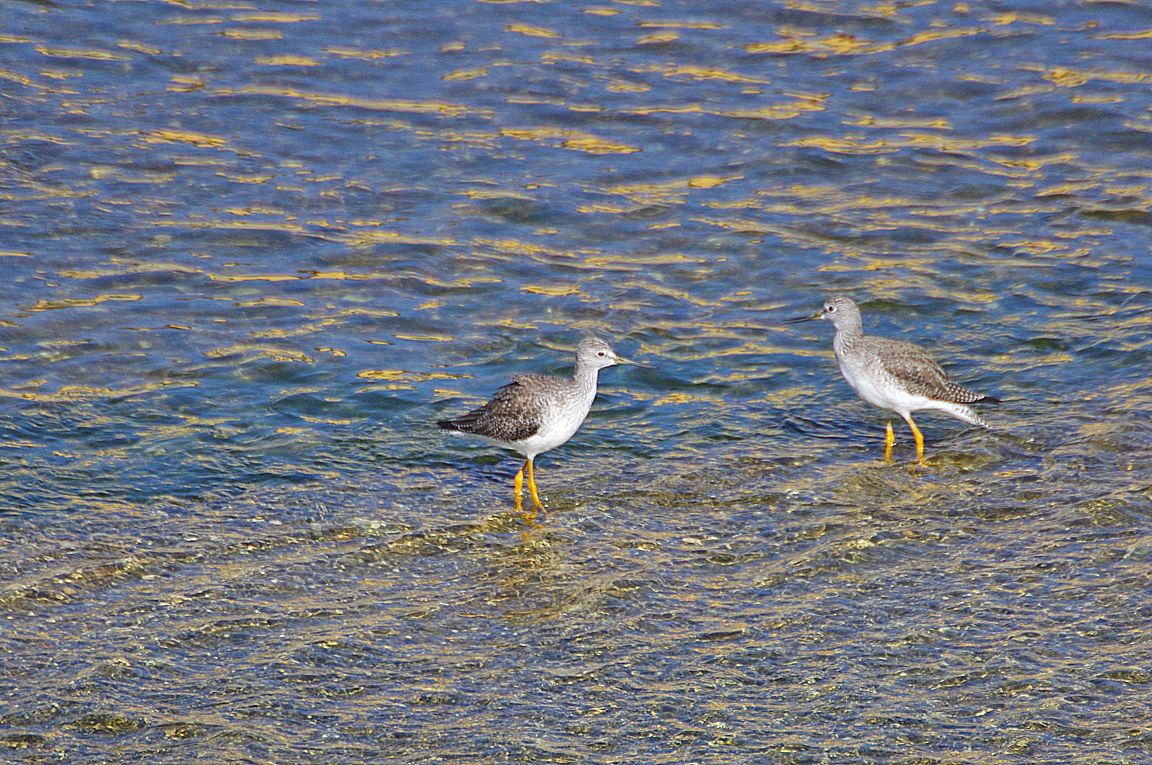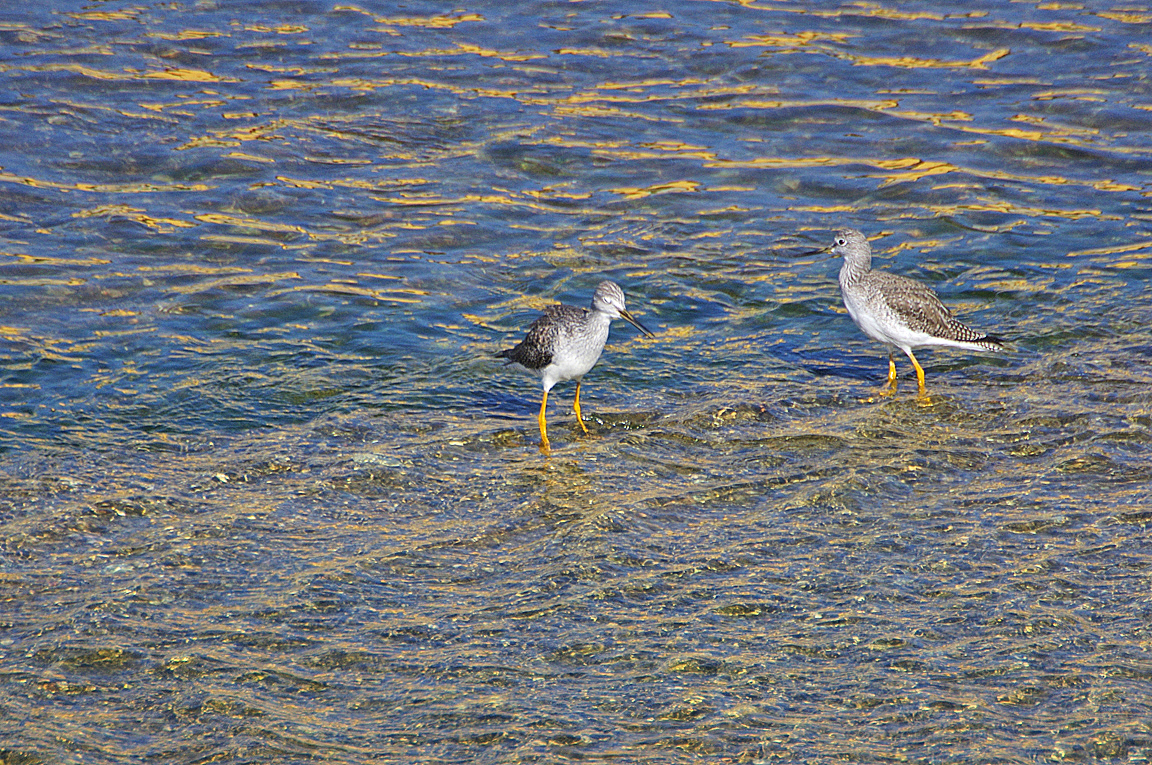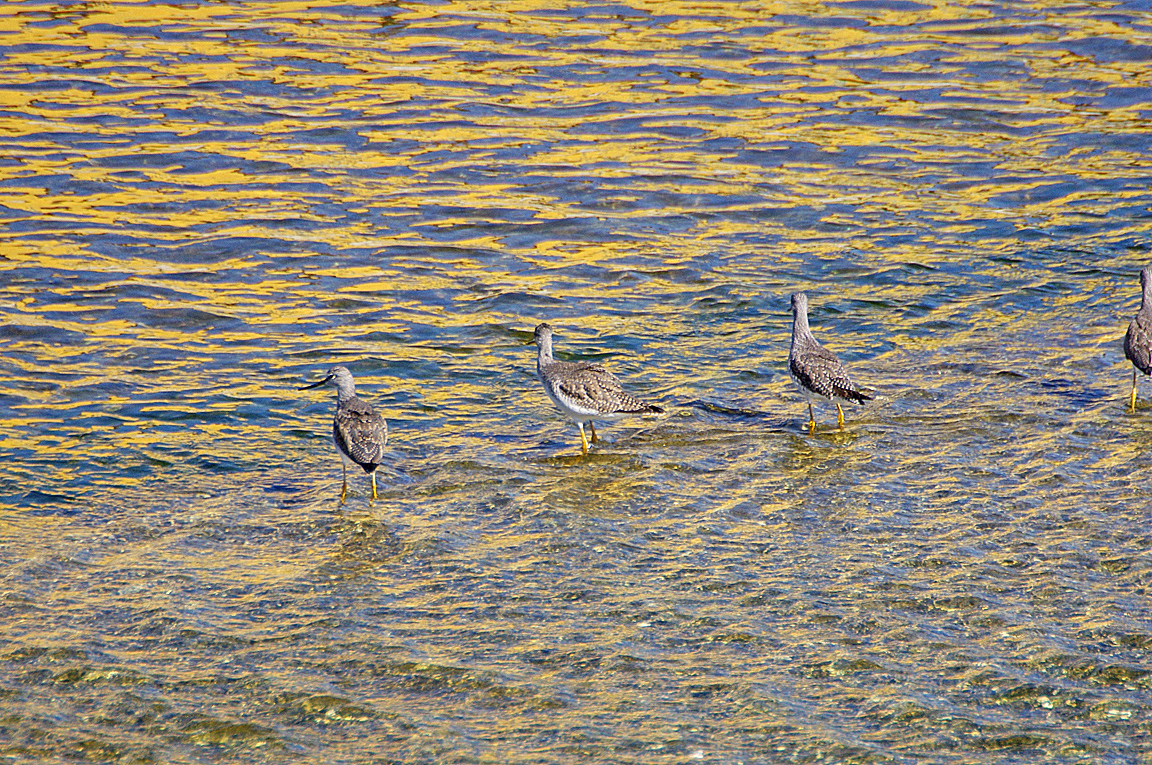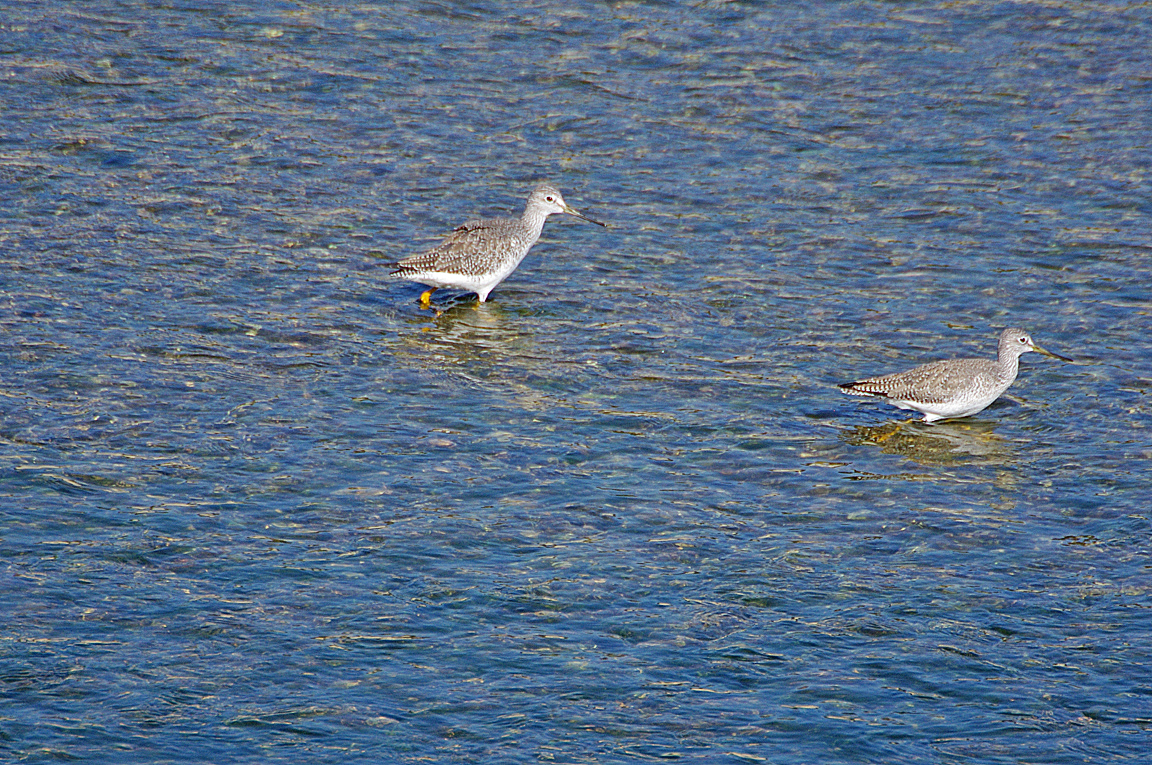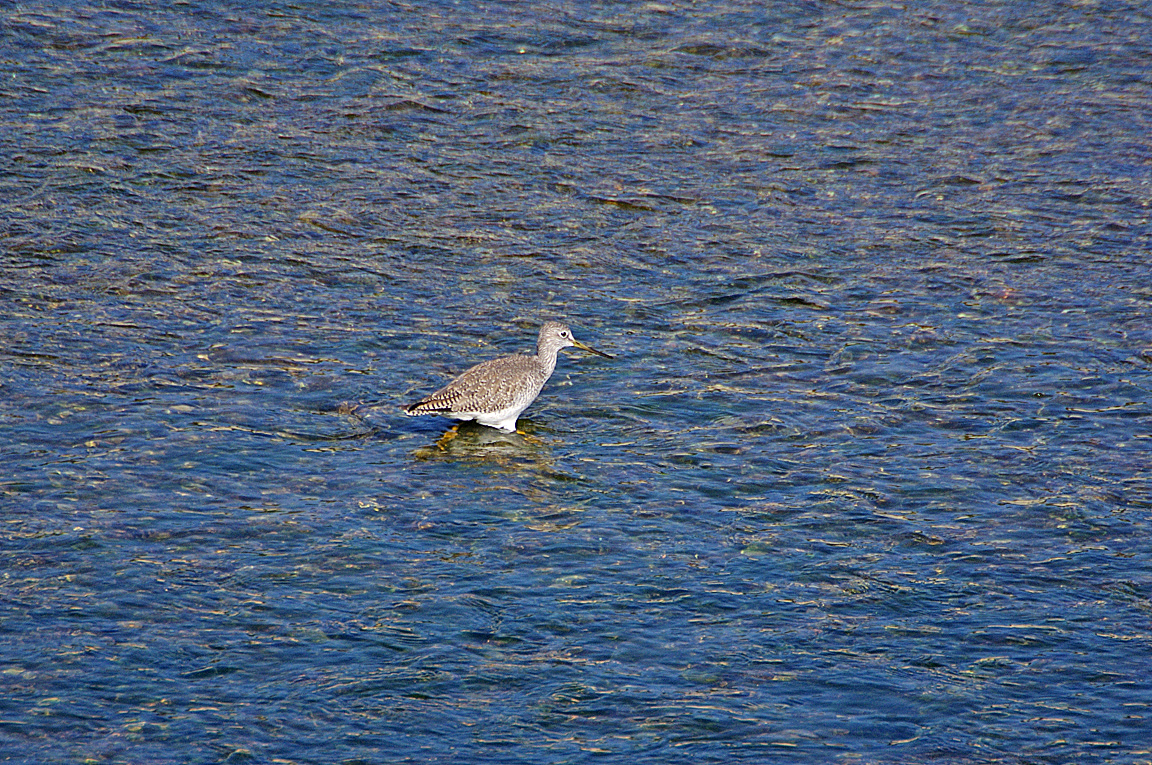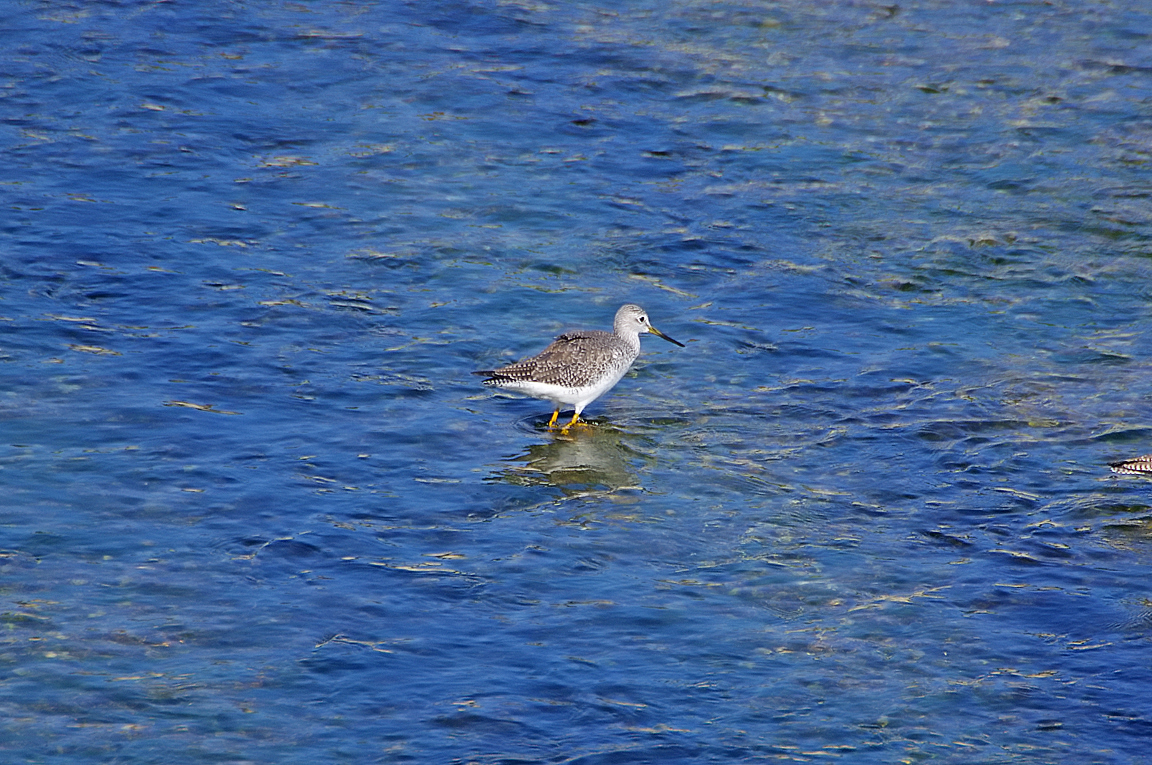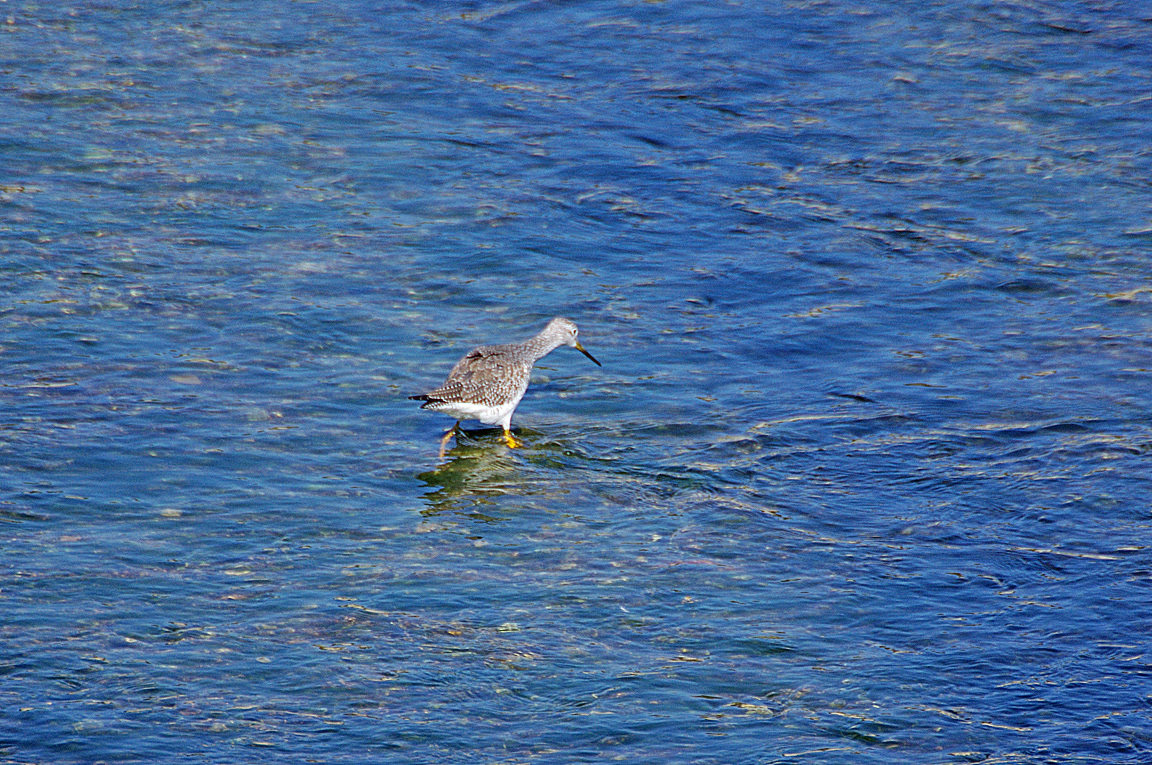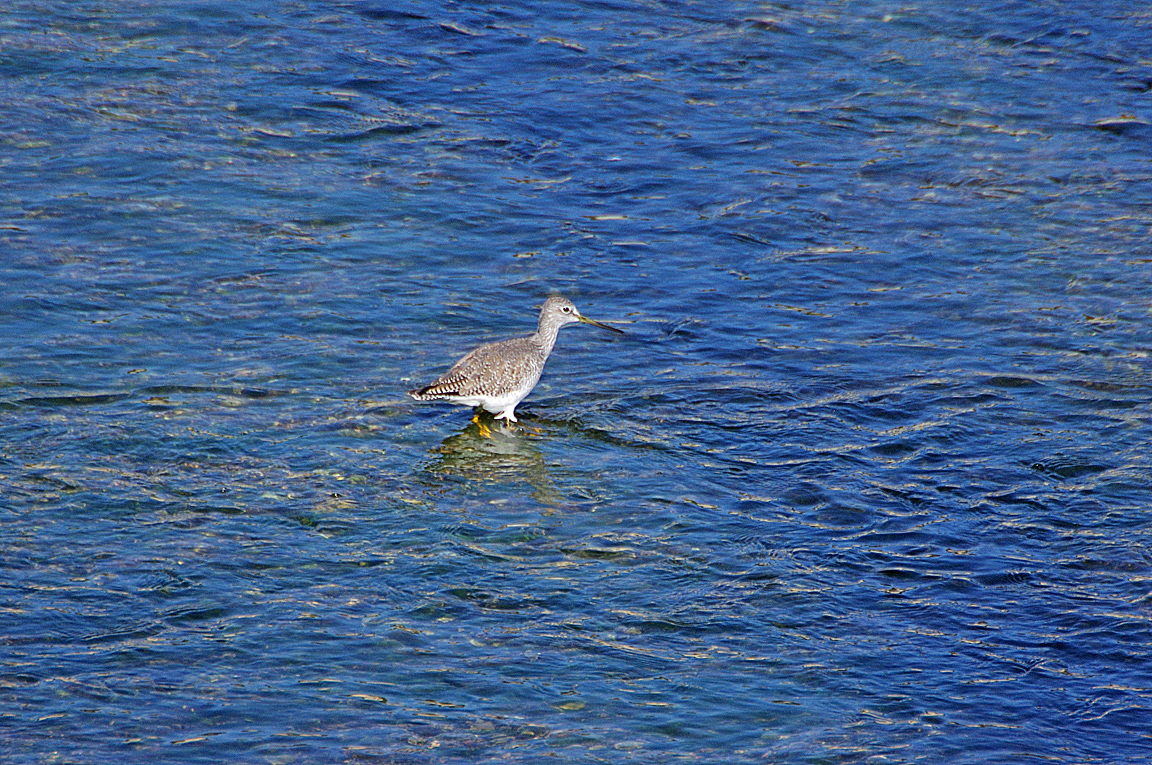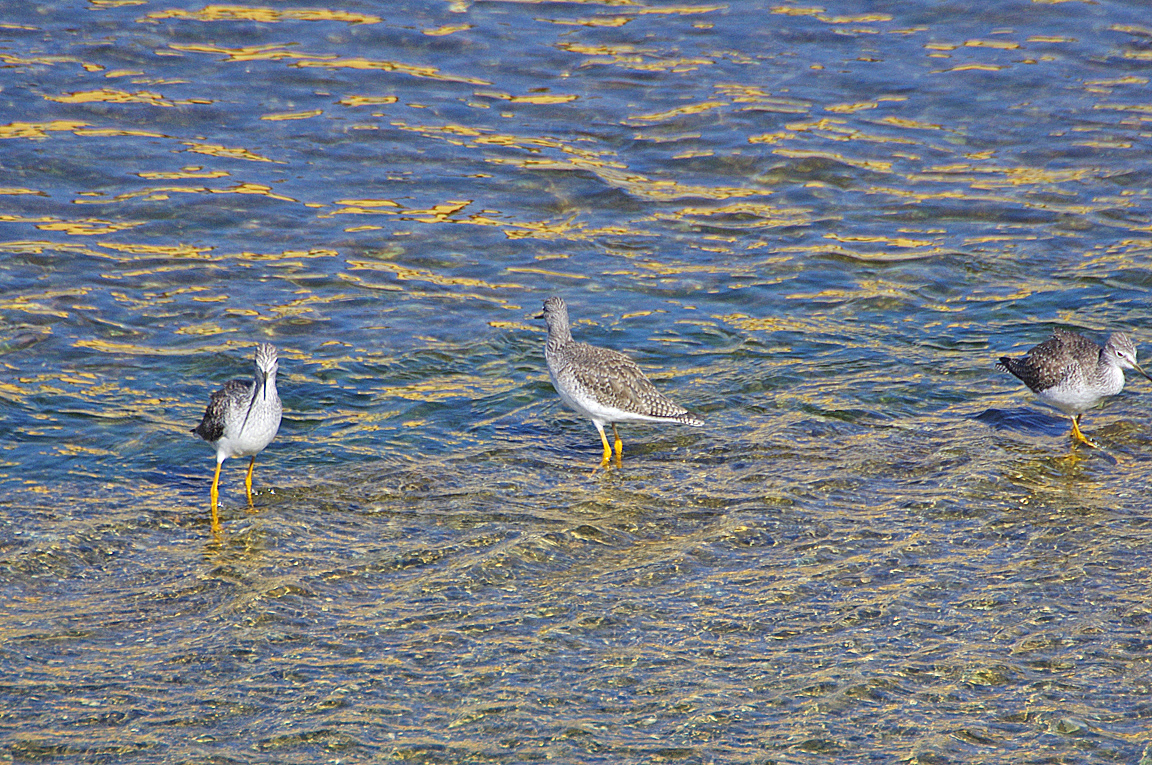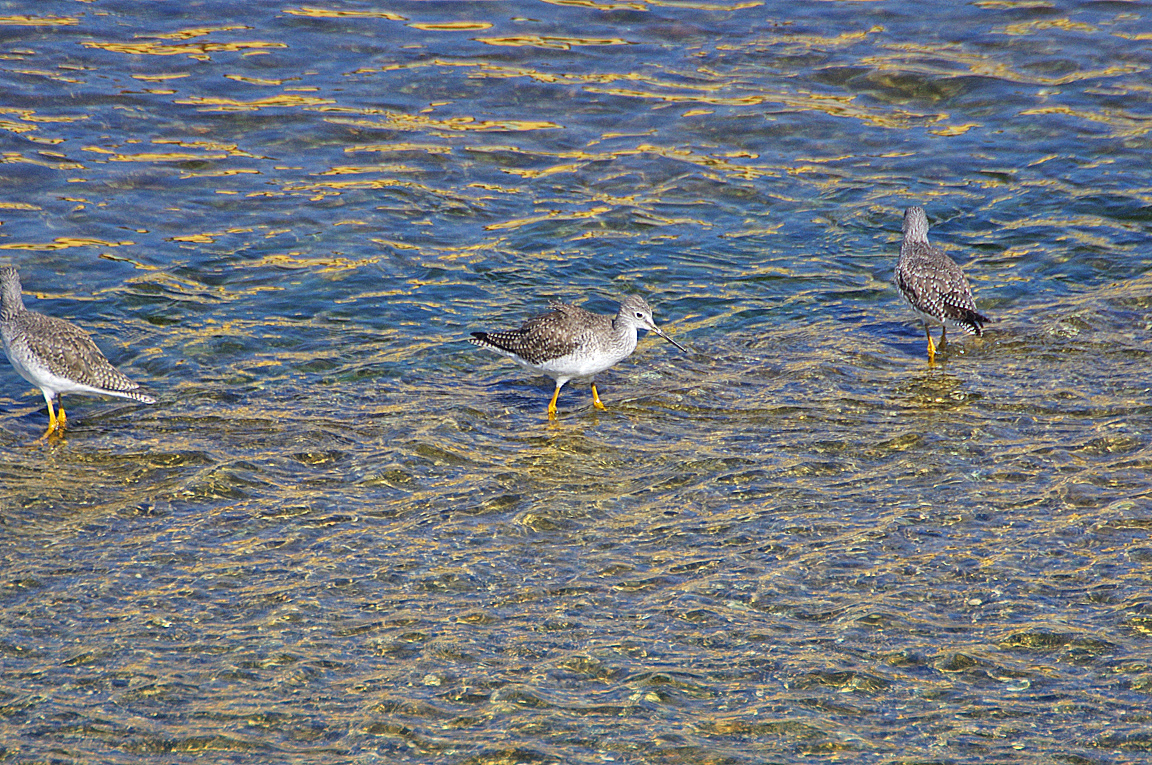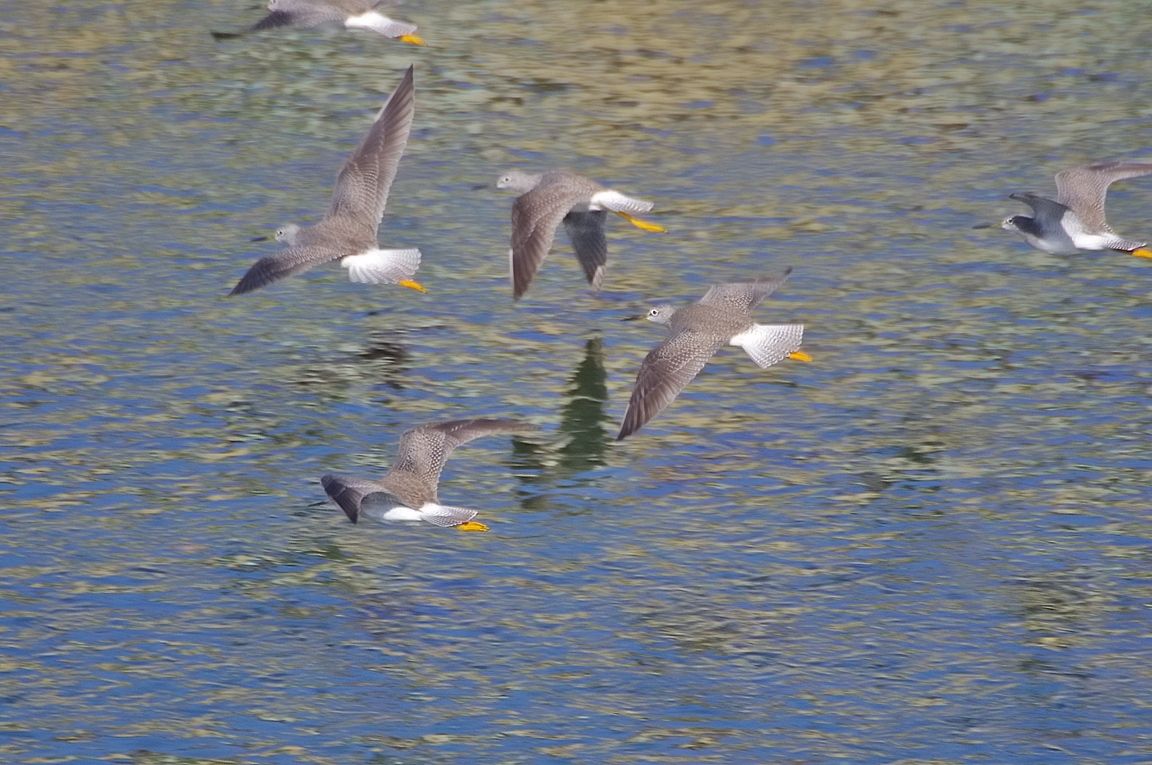|
|
|
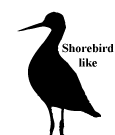 |
Lesser Yellowlegs
|
| Tringa flavipes | |
The Lesser Yellowlegs is a slender, long-legged shorebird that readily shows off the brightly colored legs that give it its name. It is an active feeder, often running through the shallow water to chase its prey.
Interesting Information
-
Both the male and female Lesser Yellowlegs provide parental care to the young, but the female tends to leave the breeding area before the chicks can fly, thus leaving the male to defend the young until fledging.
-
A group of yellowlegs are collectively known as an "incontinence" of yellowlegs.
-
When foraging, these birds are likely to scythe their bills back and forth in the water stirring up prey.
-
While the Lesser Yellowlegs is similar in appearance to the Greater Yellowlegs, they are not closely related.
Description
Adult Description
-
Length Range: 25-28 cm (10-11 in)
-
Weight: 82 g (2.9 oz)
-
Size: Medium (9 - 16 in)
-
Long, bright yellow legs.
-
Rather long neck and bill.
-
White rump and tail.
Sex Differences
Sexes Similar
Immature
Similar to adult.
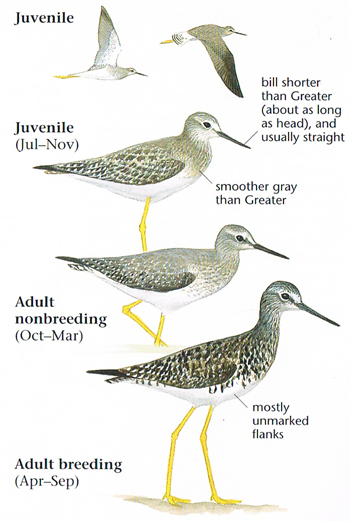
Photo taken from: The Sibley Field Guide by David Allen Sibley
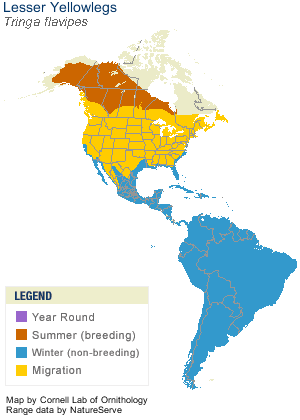
© 2003 Cornell Lab of Ornithology
|
Habitat |
|
Breeds in open boreal forest with scattered shallow wetlands. Winters in wide variety of shallow fresh and saltwater habitats. |
|
Behavior |
|
Active forager, walks through shallow water and picks up prey on or below water surface, dashes after prey on land. |
|
Food |
|
Aquatic and terrestrial invertebrates, particularly flies and beetles. Occasionally small fish and seeds. |
Taxonomy
| Kingdom: | Animalia |
| Phylum: | Chordata |
| Subphylum: | Vertebrata |
| Class: | Aves |
| Order: | Charadriiformes |
| Family: | Scolopacidae |
| Genus: | Tringa |
| Species: | Tringa flavipes |
Similar Species |
|
|
Bird Sound |
|
Two-noted short whisted "tu-tu." |
|
Eggs look like this |
|
Photo taken from: ARCTOS Collaborative Collection Management Solution |
